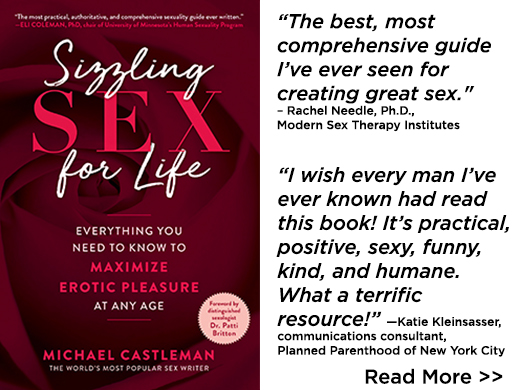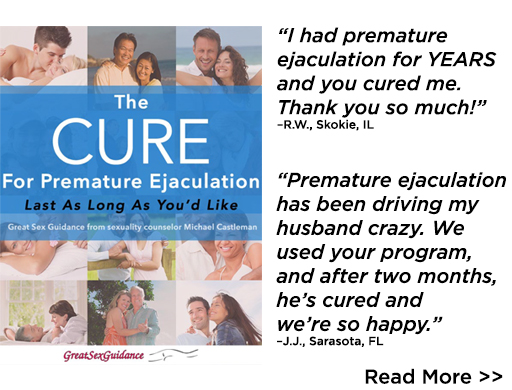
Lesbians are more orgasmic than straight women. Here’s why.
Many studies have shown that compared with heterosexual men, during partner sex, straight women, are substantially less likely to have orgasms. Heterosexual women are also less likely than lesbians to climax during partner lovemaking.
The latest report to show the hetero-lesbian orgasm divide was conducted by researchers at several U.S. universities. They solicited participants by posting on the website of NBC News (msnbc.com). More than 24,000 heterosexual women replied along with 340 lesbians. Demographic matching produced a final sample of 2,510 straight women and 283 lesbians, age 18 to 65 who were in ongoing relationships and reported partner sex during the previous month. Corroborating previous research, the lesbians reported significantly greater likelihood of orgasm (p < 0.001).
Why? Because lesbian women understand the importance of the clitoris.
Is Something Wrong with Most Women?
A century ago, during the 1920s, two decades before Indiana University’s Alfred Kinsey became the first publicly recognized sex research, New York gynecologist Robert Dickinson, M.D., quietly surveyed 1,000 married women in his practice about their sexuality. Their main complaint? No orgasms during partner sex. Almost all were orgasmic solo, but with their husbands, even those in loving marriages often found climax maddeningly elusive.
Kinsey’s much larger studies in the 1940s confirmed that during partner lovemaking, considerably fewer women than men have orgasms. And since Kinsey, the orgasm gender divide has been consistently re-confirmed in dozens of studies. With partners, men report orgasms around 95 percent of the time, but depending on the study, the figure for heterosexual women is much lower.
Why? Two possibilities—something about women or something about their partner sex.
For decades, sex researchers and the public assumed it was something about women. Many people believe that women are the more emotionally complicated gender, therefore, even minor emotional upsets might derail their orgasms.
Women also believe orgasm difficulties say something about them and their psychology. Investigators at Valparaiso University in Indiana asked 452 women why they had trouble coming. The women’s list: anxiety, pain, poor self-lubrication, and body image issues.
Many studies have documented four elements that make modest differences in women’s rate of partner-sex orgasms:
• Demographics. As women’s age, education, and income rise, their likelihood of orgasm increases a bit.
• Beliefs. Compared with women who embrace religious fundamentalism (sex only for procreation) and traditional gender roles (male breadwinners, female homemakers), women who embrace more liberal views are a little more likely to have orgasms.
• Relationships. As relationship happiness increases, women’s likelihood of climaxing increases modestly.
• Sexual trauma. Compared with survivors of child sexual abuse and/or sexual assault, women free from sexual trauma are somewhat more likely to come.
However, add up all these impacts and they don’t come anywhere near explaining the orgasm gap between heterosexual men and women.
Not the Women, the Sex
Since the millennium, several sexologists have turned away from the microscopic focus on women’s psychology to analyzing the nitty-gritty of partner lovemaking. They’ve discovered that, compared with the factors above, what lovers do—or don’t do—in bed makes a much greater difference and largely explains the orgasm divide. Women’s ability to have orgasms has less to do with their emotional complexity than with the erotic caresses their partners provide.
Australian researchers surveyed 5,118 straight men and women aged 16 to 59 about the four factors discussed above, then asked them to describe the genital touch they’d received during their most recent partner play—and if they’d come. As usual, 95 percent of the men reported climaxing, but among the women just 69 percent. The women’s demographics, beliefs, relationships, and trauma histories made only a small difference in their rate of orgasms. Meanwhile, during their most recent erotic tangos, participants reported having their genitals touched in three ways: vaginal intercourse (95 percent), massage by hand (80 percent), and oral sex (25 percent).
Among the men, the likelihood of orgasm varied only slightly based on the kinds of genital touch they received:
• Just intercourse: Men reporting orgasms—96 percent.
• Hand job and intercourse: 95 percent.
• Hand job, intercourse, and fellatio: 98 percent.
But for the women, the likelihood of orgasm varied considerably based on the types of genital caresses they received:
• Just intercourse: Women reporting orgasms—50 percent.
• Vulvar-clitoral massage, fingering, and intercourse: 71 percent.
• Vulvar-clitoral massage, fingering, intercourse, and cunnilingus: 86 percent.
For reproduction, sex is all about intercourse. But for women’s pleasure and orgasms, it’s mostly about men providing all three kinds of genital touch—particularly vulvar-clitoral massage and oral sex.
Women’s pleasure/orgasm organ is not the vagina. It’s the clitoris, the little nub that sits outside the vagina, an inch or so above it, nestled beneath the top junction of the vaginal lips. Intercourse doesn’t provide much clitoral stimulation‚ even extended intercourse with a huge penis. But clitoral massage and cunnilingus do.
Other studies corroborate this:
• Compared with partner lovemaking, women come faster and more reliably from self-sexing, which involves direct clitoral caresses.
• Indiana University researchers surveyed 1,055 women age 14 to 94. Fewer than one in five (18 percent) reported orgasms solely from intercourse. Most said they needed direct clitoral caresses. And many of those who could come during intercourse said their orgasms felt more satisfying with direct clitoral caresses.
• Scientists from several universities surveyed 407 lesbians and 370 heterosexual women. The two groups were demographically comparable, but the lesbians reported significantly more orgasms. They received more vulvar massage, fingering, and cunnilingus.
• Researchers at Chapman University in Southern California analyzed orgasms among 52,588 American adults. Lesbian women reported coming in 86 percent of encounters, heterosexual women only 65 percent. The lesbians kissed more, shared more mutual whole-body massage, and received more vulvar massage, fingering, and cunnilingus.
• One of the world’s largest porn sites, PornHub, tracks searches by gender. Compared with men, women are three times more likely to search “cunnilingus” and “pussy eating.”
Clitoral Caresses … And a Few Other Things
In the recent study that opened this post, compared with heterosexual women, lesbians received much more clitoral attention. They were also more likely to schedule sex in advance, bathe or shower together before lovemaking, talk about their sex, and engage in gentle kissing, deep kissing, and mutual whole-body massage caressing that lasted for more than 30 minutes.
Attention, straight men: If you want the women in your lives to have orgasms every time, make love the way lesbian women do. Kiss, hug, and massage one another for at least 20 minutes before you reach between women’s legs. And when you do, focus gentle, loving attention on the clitoris, especially by providing generous oral sex.





